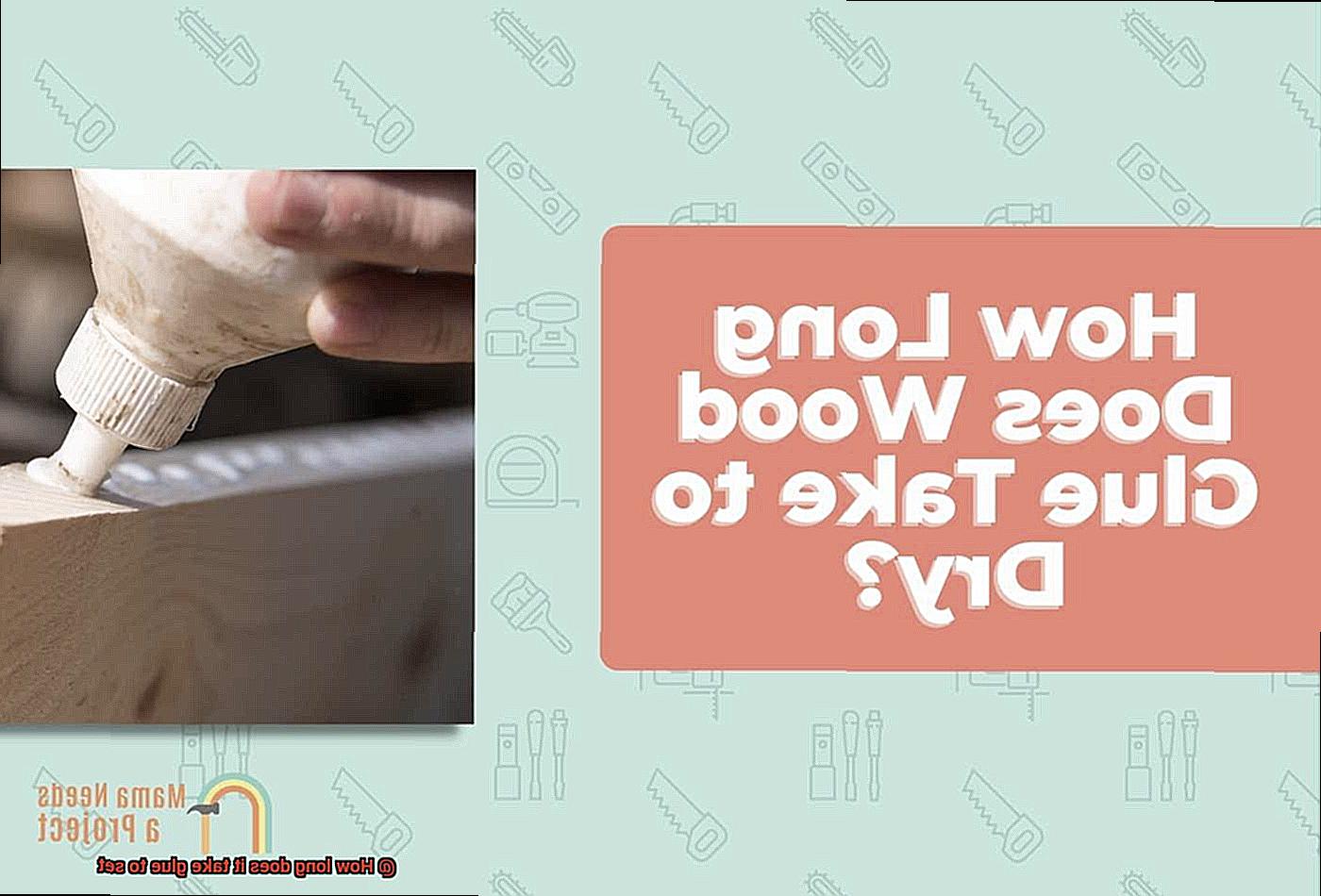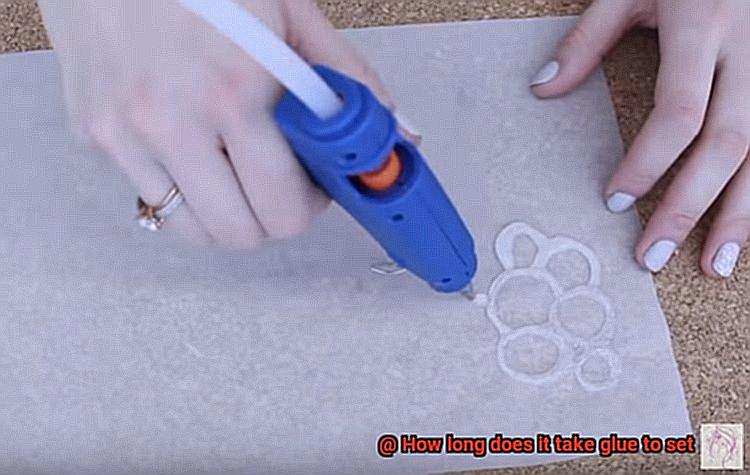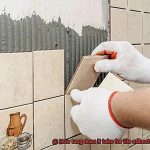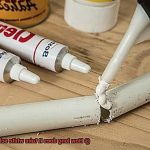It’s like the superhero of our everyday lives, swooping in to save the day when things break or when we’re feeling extra crafty. But have you ever wondered how long it actually takes for glue to set? You know, that magical moment when it goes from gooey to rock solid? Well, my friend, you’re about to find out.
In this blog post, we’re diving deep into the world of glue and uncovering the secrets behind its setting time. We’ll be exploring different types of glue and what makes them tick, taking a look at how environmental conditions can speed up or slow down the process, and even dishing out some pro tips to help you become a glue-setting master.
So get ready to stick around (pun intended) as we embark on this wild journey into the realm of adhesive marvels. We’ll be arming you with all the knowledge you need to choose the right glue for any situation and create bonds so strong they could withstand an earthquake.
Whether you’re a DIY pro or just a curious soul looking for answers, this blog post is here to satisfy your adhesive curiosity. So buckle up and prepare yourself for an adventure that will forever change the way you see glue. Trust me, it’s going to be sticky good.
The Different Types of Glue and Their Setting Times
Contents
- 1 The Different Types of Glue and Their Setting Times
- 2 Factors That Affect the Setting Time of Glue
- 3 Following Manufacturer’s Instructions for Optimal Results
- 4 Thickness and Pressure Applied During Bonding
- 5 Curing Time for Maximum Strength
- 6 Epoxy and Polyurethane Adhesives
- 7 Cyanoacrylate (Super Glue)
- 8 Allowing Adhesive to Cure Before Subjecting it to Stress or Load-Bearing Activities
- 9 Conclusion
There are various types of glue available in the market, each with its own unique characteristics and setting times. One common type of glue is the white glue, also known as school glue or craft glue. It is water-based and typically takes around 30 minutes to set. However, it may require additional time for full curing and achieving maximum strength.
Another popular adhesive is the super glue or cyanoacrylate glue. It is a fast-drying adhesive that sets almost instantly upon contact with air or moisture. It can bond various materials such as metal, plastic, and wood within seconds, but complete curing may take up to 24 hours.
Epoxy glue is a versatile adhesive known for its strong bond and durability. It consists of two components: resin and hardener.
Wood glue, also known as carpenter’s glue, is specifically designed for bonding wood surfaces. It typically has a longer setting time compared to other glues, allowing users to adjust and align the pieces before the bond becomes permanent. The setting time can vary but usually falls between 30 minutes to an hour, while complete drying may take several hours or even overnight.
For more heavy-duty applications, construction adhesive or liquid nails are commonly used. These adhesives are formulated to bond various construction materials such as concrete, wood, metal, and ceramics. The setting time for construction adhesive varies depending on the specific product and conditions, but it generally takes anywhere from 10 minutes to several hours for initial tackiness and up to 24 hours for complete curing.
Additionally, there are specialized glues available for specific applications such as fabric glue for textiles, leather glue for leather goods, and glass glue for bonding glass surfaces. The setting times for these glues can vary, so it is essential to follow the manufacturer’s instructions for optimal results.
It is important to note that setting times can be influenced by several factors, including temperature, humidity, and the materials being bonded. Lower temperatures and higher humidity levels tend to slow down the setting process, while warmer temperatures and lower humidity can accelerate it.
Overall, understanding the different types of glue and their setting times is crucial for selecting the right adhesive for specific projects.
Factors That Affect the Setting Time of Glue
When it comes to glue, understanding the factors that affect its setting time is essential for achieving successful bonding. Different types of glue, temperature, humidity, surface type, thickness of glue application, and mixing ratio (for two-part adhesives) all play a role in determining how long it takes for the glue to set.
Firstly, the type of glue used is a significant factor. Cyanoacrylate, commonly known as super glue, sets quickly within seconds. On the other hand, epoxy glue may take several minutes or even hours to set completely. Choosing the right type of glue for your specific needs is crucial, as it ensures both the desired setting time and the required strength for the intended application.
Temperature also influences the setting time of glue. Higher temperatures accelerate the setting process, while lower temperatures slow it down. This occurs because temperature affects the chemical reactions that occur during the curing process of the glue. Following the manufacturer’s instructions regarding temperature requirements is vital for optimal results.
Humidity levels can also impact how long it takes for glue to set. High levels of moisture in the air can prolong the setting time or even prevent proper setting altogether. Conversely, low humidity levels can speed up the setting time. Working in a controlled environment with moderate humidity levels ensures consistent and predictable results.
The surface type on which the glue is applied can also affect its setting time. Porous surfaces, such as wood or fabric, tend to absorb some of the moisture from the glue, which slows down the setting process. In contrast, non-porous surfaces like glass or metal allow the glue to set more quickly since they do not absorb moisture. When working with porous surfaces, it may be necessary to apply multiple layers or use specialized adhesives designed for these materials.
The thickness of the glue application is another factor to consider. Thicker layers of glue take longer to dry and set compared to thin layers. This is because thicker layers require more time for the moisture within the adhesive to evaporate, extending the curing process. It is crucial to apply an appropriate amount of glue following the manufacturer’s guidelines for optimal results.
For two-part adhesives, the mixing ratio of the components can affect the setting time. Accurate measurement and thorough mixing are necessary to prevent an improper curing process and longer setting times. Following the manufacturer’s instructions diligently ensures optimal results.
Following Manufacturer’s Instructions for Optimal Results
Following the manufacturer’s instructions is crucial for achieving optimal results when using glue. These instructions are specifically designed to ensure that the glue is used correctly and that the adhesive strength is maximized. By following these instructions, you can avoid potential risks and reap the benefits of a strong and durable bond.
One key reason why it is important to follow the manufacturer’s instructions is to ensure that you are using the right type of glue for your specific needs. Different glues have different properties and are designed for specific materials or applications. The instructions will specify which type of glue is suitable for your project, ensuring that you achieve the best results.
Additionally, the manufacturer’s instructions will provide guidance on the proper application and setting time for the glue. Applying the glue too thick or too thin, or not allowing enough time for it to set, can affect its adhesive strength. Following the recommended application techniques and setting times will help you achieve a strong bond that will stand the test of time.
Not following the manufacturer’s instructions can have several potential risks. For example, using an incorrect type of glue may result in improper adhesion or damage to the materials being bonded. Applying too much or too little glue can lead to weak bonds or messy results. Ignoring the recommended setting time can result in a bond that is not fully cured, compromising its durability.
Temperature and humidity are also factors that can affect the setting time of glue. The manufacturer’s instructions will often include recommendations for optimal temperature and humidity conditions for achieving the best bond. Ignoring these recommendations can lead to longer setting times or weaker bonds.
Thickness and Pressure Applied During Bonding
When it comes to bonding materials using glue, the thickness and pressure applied during the bonding process play a crucial role in determining how long it takes for the glue to set. Think of thickness as the distance between the two surfaces being bonded and pressure as the force exerted on the surfaces to ensure a strong and secure bond.
Let’s start with thickness. When two surfaces are brought together with a thin layer of glue in between, the adhesive has less distance to travel to create a bond. This means that the glue can set relatively quickly, often within a few minutes. However, if the materials being bonded are thick or have uneven surfaces, the glue may take longer to set as it needs more time to penetrate and create a strong bond across the entire surface area.
Now, let’s talk about pressure. Applying pressure helps to ensure that the adhesive is evenly distributed between the surfaces and that any air bubbles or gaps are eliminated. This allows for better contact between the adhesive and the surfaces, resulting in a stronger bond.
However, finding the right balance is key. Applying too little pressure can prolong the setting time of the glue as there may not be proper contact between the adhesive and the materials, leading to weaker bonds that take longer to set. On the other hand, applying excessive pressure can squeeze out excess adhesive and create a thinner layer between the surfaces, which may cause the glue to set too quickly or result in a weaker bond due to inadequate coverage.

Curing Time for Maximum Strength
The curing time for maximum strength of glue is influenced by various factors, which can be divided into several sub-topics, each playing a crucial role in the bonding process.
Firstly, the type of glue used determines its curing time. Super glue or cyanoacrylate adhesive sets almost instantly, within seconds, while epoxy adhesive requires several hours or even days to fully cure. Manufacturers specify the recommended curing time for each type of glue.
Secondly, the materials being bonded affect the curing time. Porous materials may require more time for the glue to penetrate and bond effectively. Additionally, the surface texture and composition of the materials can impact how quickly the glue cures.
Environmental conditions also play a vital role. Higher temperatures generally accelerate the curing process, while lower temperatures slow it down. Similarly, lower humidity levels can speed up curing, while higher humidity levels may slow it down. Following the recommended temperature and humidity range provided by the manufacturer is essential.
The thickness and pressure applied during bonding also affect curing time. Thin layers of glue typically cure faster than thick layers. Applying adequate pressure ensures an even spread of glue and eliminates air bubbles or gaps.
To achieve maximum strength, it is crucial to follow the manufacturer’s instructions regarding curing time. Additional steps such as heat or UV light exposure may be suggested to enhance bond strength.
Lastly, handling and stress should be avoided until the recommended curing time has passed. Even if the surface appears dry, partially cured glue may still lack full strength and durability. Applying excessive force or stress prematurely can compromise the bond.
Epoxy and Polyurethane Adhesives

Epoxy and polyurethane adhesives are two remarkable types of glue that possess extraordinary bonding capabilities and unparalleled versatility. Although they share some similarities, their differences set them apart and make them suitable for different applications.
Firstly, epoxy adhesives consist of two components – a resin and a hardener – that need to be carefully mixed together before use. This mixing initiates a chemical reaction that prompts the adhesive to set and harden. In contrast, polyurethane adhesives are typically one-part formulations, eliminating the need for any mixing.
Secondly, setting time is another distinguishing factor between these two adhesives. Epoxy adhesives have a shorter setting time compared to polyurethane adhesives. They can set within minutes to hours, while polyurethane adhesives may take a similar amount of time or longer.
Furthermore, both epoxy and polyurethane adhesives require a curing process to reach their maximum bonding strength. Curing refers to the chemical reactions that take place within the adhesive, solidifying it and enhancing its durability. The duration of the curing process can range from several hours to several days for both types of adhesives.
Application requirements also vary between epoxy and polyurethane adhesives due to their composition and properties. Epoxy adhesives demand precise mixing ratios of resin and hardener, as well as meticulous surface preparation for optimal bonding. Polyurethane adhesives, on the other hand, are more forgiving in terms of mixing ratios and surface preparation, making them easier to use in certain applications.
Lastly, performance plays a significant role in choosing between epoxy and polyurethane adhesives. Epoxy adhesives exhibit exceptional strength and resistance to chemicals, heat, and moisture. They are commonly employed in industries such as aerospace, marine, and automotive where high bond strength is essential. Conversely, polyurethane adhesives offer excellent flexibility and resistance to impact and vibration, making them ideal for applications that involve materials undergoing frequent movement or vibration, such as construction and woodworking.

Cyanoacrylate (Super Glue)
Cyanoacrylate, also known as super glue, is a remarkable adhesive that bonds quickly and securely to a wide range of materials. Whether you’re fixing a broken vase or working on a DIY project, this fast-acting adhesive is your go-to solution.
The setting time of cyanoacrylate glue can vary depending on several factors. The type and brand of glue, the materials being bonded, and the environmental conditions all play a role in how quickly the glue sets. But rest assured, once applied, the magic begins.
When super glue comes into contact with a surface, it undergoes a chemical reaction called polymerization. During this process, the adhesive molecules link together to form an unyielding bond. The transformation from liquid to solid happens in the blink of an eye, creating an unbreakable connection between the surfaces being glued together.
While super glue may set rapidly, it’s important to note that it may take some additional time for it to reach its maximum strength and durability. The full curing or hardening process can take anywhere from several hours to 24 hours or more, depending on the specific product and circumstances.
Temperature, humidity, and the thickness of the adhesive layer all affect how fast super glue sets. Higher temperatures speed up the setting time, while lower temperatures slow it down. Likewise, high humidity accelerates the curing process, while low humidity prolongs it. So keep these factors in mind when using super glue for your projects.
To ensure optimal bond strength, it’s best to avoid stressing or manipulating the glued surfaces during the curing period. Give the glue ample time to fully cure before subjecting it to any stress or load. It’s always a good idea to follow the manufacturer’s instructions and guidelines for the specific super glue product you’re using.
Allowing Adhesive to Cure Before Subjecting it to Stress or Load-Bearing Activities
Ensuring that adhesive is fully cured before subjecting it to stress or load-bearing activities is of utmost importance. Rushing this process can lead to several potential risks that can compromise the strength and longevity of the bond. Let’s take a closer look at these risks:
- Weaker Bond: When adhesive is not given sufficient time to cure, it may result in a weaker bond. The adhesive needs ample time to develop strong intermolecular bonds with the surfaces being bonded. If stress or load is applied prematurely, these bonds may not have formed properly, leading to a weaker bond that is more susceptible to failure.
- Bond Failure: Applying stress or load too soon can cause the adhesive to fail completely. The adhesive may not have reached its maximum strength, and the force applied can exceed its holding capacity, resulting in a complete bond failure.
- Reduced Longevity: Adhesives that have not fully cured are not equipped to withstand long-term stress or load-bearing activities. Over time, these forces can weaken the bond, leading to failure or detachment.
To avoid these risks, it is imperative to follow the recommended curing time specified by the adhesive manufacturer. Here are some concrete steps you can take:
- Read Instructions: Take the time to carefully read and understand the manufacturer’s instructions regarding curing time for the specific adhesive product being used. Different adhesives have different curing times, so it is crucial to follow the recommendations specific to your chosen product.
- Maintain Environmental Conditions: Environmental conditions such as temperature and humidity play a significant role in the curing time of adhesives. Ensure that you adhere to the recommended conditions specified by the manufacturer during the curing process.
- Allow Sufficient Time: Patience is key when it comes to allowing adhesive to cure. Give it ample undisturbed time to reach its maximum strength before subjecting it to any stress or load-bearing activities.
- Use Temporary Support: If load-bearing activities cannot be avoided during the curing process, consider using temporary support or clamping to prevent any movement or stress on the bond. This will help maintain the integrity of the bond until it has fully cured.
U0hhFjjW5EU” >
Conclusion
In conclusion, the time it takes for glue to set depends on various factors, including the type of adhesive, environmental conditions, and the materials being bonded. Different glues have different setting times – white glue typically takes around 30 minutes to set, while super glue instantly bonds upon contact with air or moisture. On the other hand, epoxy glue requires a longer setting time, sometimes taking several hours or even overnight to fully cure.
Temperature and humidity can greatly influence how quickly glue sets. Higher temperatures and lower humidity levels speed up the process, while colder temperatures and higher humidity can slow it down. Additionally, the thickness of the glue application is also a determining factor. Thicker layers take longer to dry and set compared to thin layers.
To achieve optimal results when using glue, it is crucial to follow the manufacturer’s instructions diligently. These instructions not only help in selecting the right type of glue for specific needs but also provide guidance on application techniques and curing times. Disregarding these instructions may result in weak adhesion or compromised bonds.
Allowing sufficient time for the adhesive to cure is essential for maximum bond strength. Rushing this process can lead to weaker bonds, bond failure, and reduced longevity. Therefore, it is important to exercise patience and refrain from subjecting glued materials to stress or load-bearing activities until they have fully cured.
By understanding the characteristics of different glues, their respective setting times, and adhering to proper application techniques and curing times, you can ensure strong and long-lasting bonds for your projects.






